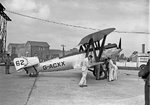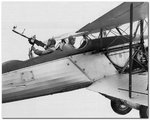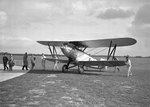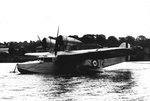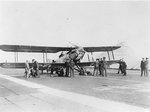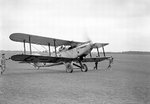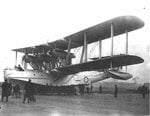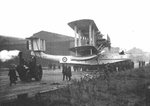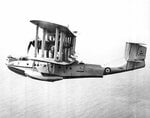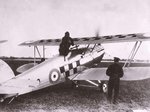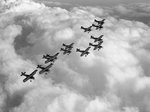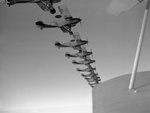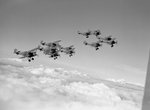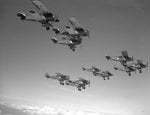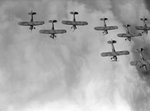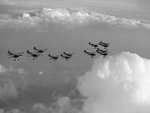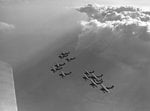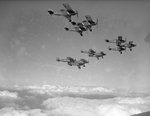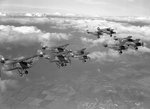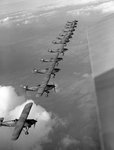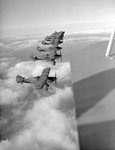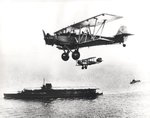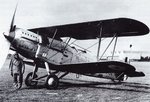The RAF finished the First World War as the world's first independent air force with strength of 293,532 officers and men and a self-confidence of its own capabilities as shown by its actions during the final campaigns of the war. However, despite the fact the RAF did not face the introspective analysis of the war that was required by both the Army and RN in terms of their roles in future wars it did begin to analyse the potential role that air power would play in the future. In January 1919 Air Marshal Sir Hugh Trenchard, now Chief of the Air Staff, had the Air Ministry produce a synopsis of the role that the air force had played in the First World War. This piece laid out four principles that were to form the core of RAF thinking for much of the inter-war period. The most important of these was the argument that central to the effective application of air power in the battle space was the attainment of 'Command of the Air' or air superiority.
However, before Trenchard could forge a future for the newly formed RAF he first had to defend it from budgetary constraints that were being placed upon each of the three services in the early post-war years. The RAF's budget went from £52.5 million in 1920 to £9.4 million in 1923, a drop of some eighty-three percent and in the same period it saw its strength drop to some 27,000 officers and men and just twenty-five squadrons. Each of the three services had to contend with a smaller pot of money and deal with the Treasury's contention of the ten-year rule as a basis for military spending, which caused serious issues for the planners of each the services. The rule also did not help the already prevalent hostility that existed between the newborn RAF and the older branches of the military. Both the Army and RN argued that they should have control of their own air assets and for much of the inter-war period both branches made concerted efforts to bring their assets back into their respective folds.
It is useful to note the personal effect that budgetary constraints had upon the service. For example, in 1920, the future Marshal of the Royal Air Force, then Squadron Leader Arthur Travers Harris who as Officer Commanding No. 3 Flying Training School had to do battle with the bureaucracy of Whitehall when an issue arose over the disposal of redundant supplies, in this case excess cans of petrol. Harris in his usual effective manner stored the cans behind barbed wire and he soon discovered that some had evaporated. He quickly reported this and in return, he received an abusive letter informing him that he now had to pay for the shortage. This illustrates the problems that were faced by the service in the early post-war years and the length that would be taken to save money. Luckily, for Harris he used his ingenuity and checked with a local petrol company as to how much petrol could evaporate over a period of a year, the answer to which was 100%. He proceeded to tell the air ministry that he was owed money and the matter was dropped. Harris noted to his official biographer, Dudley Saward that 'Serving in the services in the immediate aftermath of a war is not an exciting or particularly pleasant experience.' In other areas too, the service faced serious financial problems and more often than not officers found themselves doing jobs that at any other time would have been done by at least two officers. For example, Squadron Leader Alec Haslam at the School of Army Co-Operation in 1921 noted that the reason for this was the fear of the Geddes Axe and, therefore, he noted that, 'We doubled every job we needed except the Wing Commander.' Thankfully, for Haslam the 'Axe' did not fall on the school and soon after he was able to suggest the posting of Squadron Leader Trafford Leigh Mallory to the School as No. 2 Squadron Leader. Alongside its budgetary figures it is useful to examine the expenditure of the various services in this period, table 1.1 shows that RAF expenditure on armaments and various war stores compared favourably with the army but not so well in comparison to the RN and its capital ship building program.
Source: The Royal Air Force and the Problems of the Inter-War Years « Thoughts on Military History
However, before Trenchard could forge a future for the newly formed RAF he first had to defend it from budgetary constraints that were being placed upon each of the three services in the early post-war years. The RAF's budget went from £52.5 million in 1920 to £9.4 million in 1923, a drop of some eighty-three percent and in the same period it saw its strength drop to some 27,000 officers and men and just twenty-five squadrons. Each of the three services had to contend with a smaller pot of money and deal with the Treasury's contention of the ten-year rule as a basis for military spending, which caused serious issues for the planners of each the services. The rule also did not help the already prevalent hostility that existed between the newborn RAF and the older branches of the military. Both the Army and RN argued that they should have control of their own air assets and for much of the inter-war period both branches made concerted efforts to bring their assets back into their respective folds.
It is useful to note the personal effect that budgetary constraints had upon the service. For example, in 1920, the future Marshal of the Royal Air Force, then Squadron Leader Arthur Travers Harris who as Officer Commanding No. 3 Flying Training School had to do battle with the bureaucracy of Whitehall when an issue arose over the disposal of redundant supplies, in this case excess cans of petrol. Harris in his usual effective manner stored the cans behind barbed wire and he soon discovered that some had evaporated. He quickly reported this and in return, he received an abusive letter informing him that he now had to pay for the shortage. This illustrates the problems that were faced by the service in the early post-war years and the length that would be taken to save money. Luckily, for Harris he used his ingenuity and checked with a local petrol company as to how much petrol could evaporate over a period of a year, the answer to which was 100%. He proceeded to tell the air ministry that he was owed money and the matter was dropped. Harris noted to his official biographer, Dudley Saward that 'Serving in the services in the immediate aftermath of a war is not an exciting or particularly pleasant experience.' In other areas too, the service faced serious financial problems and more often than not officers found themselves doing jobs that at any other time would have been done by at least two officers. For example, Squadron Leader Alec Haslam at the School of Army Co-Operation in 1921 noted that the reason for this was the fear of the Geddes Axe and, therefore, he noted that, 'We doubled every job we needed except the Wing Commander.' Thankfully, for Haslam the 'Axe' did not fall on the school and soon after he was able to suggest the posting of Squadron Leader Trafford Leigh Mallory to the School as No. 2 Squadron Leader. Alongside its budgetary figures it is useful to examine the expenditure of the various services in this period, table 1.1 shows that RAF expenditure on armaments and various war stores compared favourably with the army but not so well in comparison to the RN and its capital ship building program.
Source: The Royal Air Force and the Problems of the Inter-War Years « Thoughts on Military History



